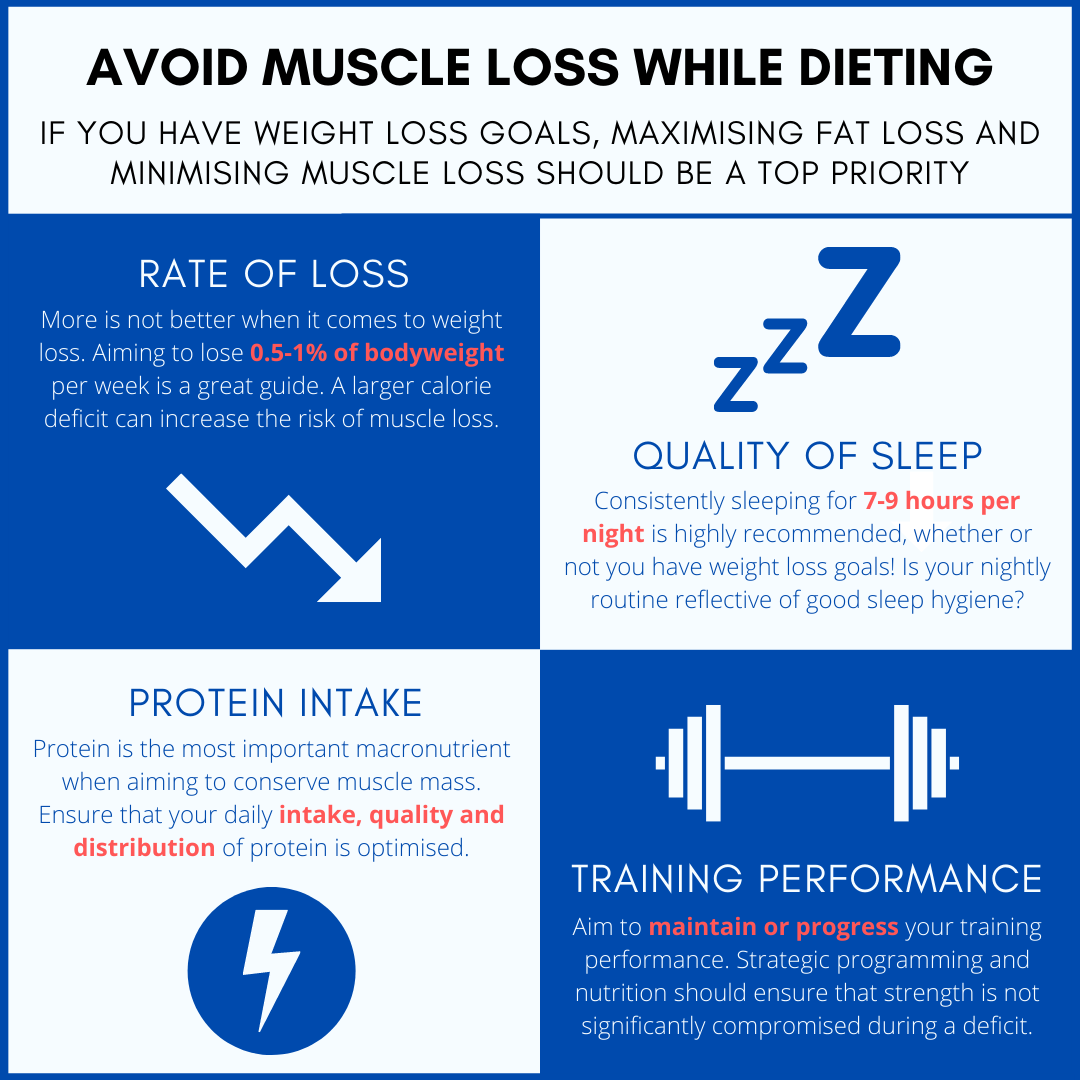Is your goal to achieve weight loss, or fat loss?
Weight loss and fat loss are often used synonymously when describing body composition goals, however it’s important to recognise their differences.
The term weight loss is used to describe the total amount of weight an individual has lost in absolute terms. Therefore, weight loss will include more than just adipose tissue. It will also encompass losses in fluid, intestinal residue, glycogen storage, bone, connective tissue, smooth muscle, skeletal muscle and the like.
Fat loss on the other hand refers specifically to a reduction in adipose tissue, which as mentioned will contribute to total weight loss.
Clarifying the differences between these two is important for those who are attempting weight loss, in the pursuit to reduce body fat. This is because scale weight DOES need to be decreasing in order to lose a significant amount of adipose tissue, however it is not the sole determinant of a successful fat loss phase.
A gold-standard fat-loss journey should be executed in a manner that prioritises a decrease in adipose tissue, while aiming to maximally retain muscle mass. As the above infographic illustrates, there are four main pillars which will dictate the ratio of fat:muscle that is lost during a dieting phase.
▪️ROL: Aim to lose an average of 0.5-1% of your total BW per week. Aggressive rates of loss which exceed this for an extended period of time can risk muscle loss.
▪️Sleep: Aim for 7-9 hours of high quality sleep per night and have a consistent schedule and routine.
▪️Protein: Prioritise total intake of 1.6-2.2g/kg/day, from high-quality sources that are evenly distributed.
▪️Training: Don’t let an energy deficit mentally get the best of you. Be strategic with your programming, nutrition and recovery, and aim to progress or maintain your performance across the board - dieting does NOT mean you should be losing strength.
By optimising the above variables, you are well on your way to maximising fat loss and minimising muscle loss!
